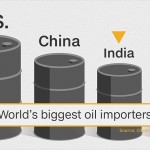Oil falls 2-3 percent on surplus worries, as U.S. drops toward $27

Crude futures slumped again in Asian trade on Wednesday, with U.S. oil droppping more than 3 percent toward $27 a barrel and its lowest since 2003, on worries about global oversupply.
That came after the International Energy Agency, which advises industrialized countries on energy policy, warned that oil markets could “drown in oversupply” in 2016.
The crash hammered Asian stock markets with MSCI’s broadest index of Asia-Pacific equities outside Japan .MIAPJ0000PUS falling 2.8 percent to a four-year low.
“Oil prices are at a level where OPEC countries are all struggling. They are selling oil for cash flow not for profit,” said Jonathan Barratt, chief investment financial officer at Sydney’s Ayers Alliance.
“U.S. producers are holding out, but I think they’re bleeding as well,” he said.
U.S. crude futures CLc1 were trading down 97 cents at $27.49 a barrel, or 3.4 percent, at 0625 GMT, the lowest since September 2003.
The contract settled down 96 cents, or 3.26 percent, the session before.
The expiry of the February contract on Wednesday was “probably” adding further downward pressure on U.S. West Texas Intermediate oil as traders closed positions, said Michael McCarthy, chief market strategist at Sydney’s CMC Markets.
Brent futures LCOc1 dropped 61 cents to $28.15 a barrel, or 2.1 percent, not far from the 12-year low hit on Monday. It settled up 21 cents, or 0.7 per cent, in the previous session.
McCarthy said the market had already taken into account the 500,000 barrels per day Iran has forecast it will add to global production.
“(Iran) is really another strike in the same beating the market has taken,” McCarthy said.
U.S. commercial crude oil stocks were forecast to have risen by 3 million barrels last week, a preliminary Reuters survey taken ahead of weekly inventory data, showed on Tuesday.
Stocks data from industry group the American Petroleum Institute is due out later on Wednesday. Official data from the U.S. Department of Energy’s Energy Information Administration will be out on Thursday, a day late due to a public holiday.
Ample storage space for crude around the world, including 230 million barrels of new storage to be completed this year, will help prevent further sharp price falls but will weigh against significant price rises, according to analysts and industry watchers.
Global financial markets seem to be overreacting to falling oil prices and the risk of a sharp downturn in China’s economy, Maurice Obstfeld, the International Monetary Fund’s chief economist said on Tuesday.
Source: REUTERS – Oil falls 2-3 percent on surplus worries, as U.S. drops toward $27
IEA releases Oil Market Report for January
As oversupply, mild temperatures and grim economic news check growth demand, non-OPEC output falls year-on-year for first time since 2012
Exceptionally mild temperatures in the early part of the winter in Japan, Europe and the United States – alongside weak economic sentiment in China, Brazil, Russia and other commodity-dependent economies – saw global oil demand growth flip from a near five-year high in the third quarter of last year, at 2.1 million barrels per day (mb/d), to a one-year low in the fourth quarter of 1.0 mb/d, the IEA Oil Market Report (OMR) for January informed subscribers.
Persistent oversupply, bloated inventories and a slew of negative economic news pressured prices so that by mid-January crude oil touched 12-year lows. The OMR outlook for 2016 has demand growth moderating to 1.2 mb/d.
Global oil supplies expanded by 2.6 mb/d last year, following hefty gains of 2.4 mb/d in 2014. By last December, however, growth had eased to 0.6 mb/d, with lower non-OPEC production that pegged below year-earlier levels for the first time since September 2012.
OPEC crude output eased by 90 000 barrels per day (90 kb/d) in December to a still-lofty 32.28 mb/d, including newly rejoined Indonesia. Iran, now relieved of sanctions, insists it will boost output by an immediate 500 kb/d. Our assessment is that around 300 kb/d of additional crude could be flowing to world markets by the end of the current quarter.
Global inventories rose by a notional 1 billion barrels in 2014-15, with the fundamentals suggesting a further build of 285 mb over the course of this year. Despite significant capacity expansions in 2016, this stock build will put storage infrastructure under pressure and could see floating storage become profitable.
Global refinery runs averaged 79.5 mb/d in the fourth quarter of 2015, down 0.3 mb/d from the estimate in last month’s OMR due to lower-than-expected throughputs in non-OECD Asia except China and a very high maintenance schedule in October. Global refinery margins weakened in December as middle distillate cracks fell and overwhelmed the resilience of gasoline and naphtha.
In addition to these highlights and detailed analysis of demand, supply, prices and refining developments, and their short-term outlook, the January OMR features an article that details the effects of Iran’s post-sanctions return as a full player in the oil markets. Another looks at how warmer early-winter weather in parts of the Northern Hemisphere has suppressed demand for OECD oil, while a third examines the surge in global oil storage capacity foreseen for this year and beyond. A fourth in-depth feature reports that floating storage is “slowly sailing away”, while a fifth assesses the dampening effect of subsidy cuts on the already weaker Saudi Arabian demand outlook.
The Oil Market Report (OMR) is a monthly International Energy Agency publication which provides a view of the state of the international oil market and projections for oil supply and demand 12-18 months ahead.
Source: IEA




























